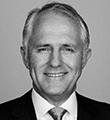A seawater pumped hydro project in South Australia’s Spencer Gulf could generate 225 megawatt (MW) of electricity, an initial feasibility study released by the Australian Renewable Energy Agency (ARENA) has found.
The study represents an important milestone in the project. It will allow Energy Australia to proceed to the next stage of planning.
In February, the Turnbull Government, through ARENA, provided $453,000 in funding to conduct an initial feasibility study into the proposed pumped hydro facility in Cultana which would be the first of its kind in Australia to use seawater. The study was completed by EnergyAustralia with support from Arup and the Melbourne Energy Institute.
The knowledge sharing report, released today, concluded that the technical challenges of using seawater in pumped hydro energy storage (PHES) projects can be overcome, subject to further engineering design.
The study found the plant would be capable of generating 225 MW of electricity and 1770 MWh of power with eight hours of storage – the equivalent of more than 126,000 home batteries, but at a third of the cost.
This is a major breakthrough for South Australia. It confirms the Turnbull Government’s determination to ensure that every South Australian family and businesses gets the affordable and reliable power they need.
Initial cost estimates suggest the project would cost $477 million to build. According to the report, the plant could be constructed and operational by 2023. The project will now have to undergo further engineering assessments, planning approvals and financial modelling.
The report is encouraging for further work on saltwater pumped hydro. The study shows that the Cultana project is technically feasible, can address the market need for energy firming to facilitate the growth of renewable energy in South Australia and is economically viable under a range of plausible scenarios.
PHES involves pumping water uphill to a storage reservoir and releasing it through a turbine to provide additional energy into the electricity grid when it is needed. The rapid rate of dispatch means that pumped hydro storage systems are a reliable energy source for balancing peak demands and providing backup for renewable generation.
In his review of the National Electricity Market, Chief Scientist Dr Alan Finkel noted that pumped hydro storage systems are the most mature electrical energy storage systems available.
This is one of several projects supported by the Turnbull Government that explore the potential of PHES and hydroelectricity in Australia’s future energy system.
Last week, the Australian National University also released its nationwide atlas – funded by ARENA – which identified more than 22,000 PHES sites, mostly off river and away from developed areas or national parks.
Along with the recently announced funding for Snowy Hydro 2.0, Hydro Tasmania last week announced it was proceeding with feasibility studies, jointly funded through ARENA, to upgrade and expand two existing hydro power stations and identify up to 30 high potential PHES sites across Tasmania.

